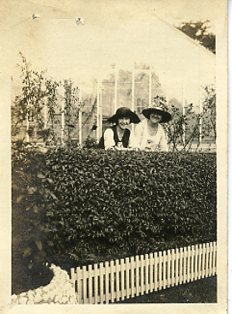Sign up for the Family Tree Newsletter! Plus, you’ll receive our 10 Essential Genealogy Research Forms PDF as a special thank you.
Get Your Free Genealogy Forms
"*" indicates required fields
Last week, I collected images from individuals who’d found photos in their registration goody bags at the National Genealogical Society conference in Fort Lauderdale. As the images flooded in to my exhibit hall booth, it quickly became apparent that this was an enormous photo identification challenge.
Would it be possible to match up some of these images and recreate some of the original albums? Maybe.
Bins and boxes of miscellaneous snapshots that were left behind when someone died or discarded are in almost every antique shop and photo sale. I’ve watched sellers at photo shows pull apart old albums to sell the images individually. They don’t know that albums tell a story and that by taking them apart they are discarding the context of the tale.
I’d love to have a photo album owned by an ancestor, and I bet you would too.
For two days, volunteers helped me organize those turned-in images. At last count there were 75 bags of recreated matches ranging from just two images to one envelope that contained approximately 20 images of a New Jersey family.
Here’s how we did it. If you inherit a large box of miscellaneous pictures, these tips might help you put them in order.
unidentified image, circa 1920.
- Watch for writing: There was handwriting on some of these images. By matching up the script, it was possible to group pictures captioned by the same person
- Album corners: One person designed beautiful black photo corners, the remnants of them were still on the images. They became another group.
- Caption clues: A person with a flair for poetry wrote on the back of many images, creating a rhyme about the people depicted. You guessed it. This was a matching clue.
- Dogs, cars and people: We watched for similarly dressed individuals, thinking that photographers often take more than one picture on a given day. Yes! That was case, now the challenge is to recreate the order of those images.
There were pets in some of the photos and they also served as an identification clue. So did automobiles.
- Background: One family posed relatives in front of a grape arbor for about 30 years. It was their own private photo studio. Another family posed in front of a brick house. After studying other clues, it was apparent that this posing in front of architectural elements was part of their family photo technique. Both groups of images represented the same family at different times. Bingo!
- Photo format: Early 20th century images came in a wide range of sizes, but it was easy to group pictures by the same decorative border, the quality of the sepia tone or those mid-20th century black-and-white snapshots with deckled edges.
- Photo developing number: After examining all of the above, we turned over the images and started matching developing numbers (those stamped numbers) on the back, cross-checking by image size and people. This resulted in many more matches.
It’s clear that many of the images people gave me were random photos, not part of any of the existing matches. There is still a lot of work to be done on the piles. I’m hoping for a few more picture connections.
There are still photos out there. If you received one and don’t want to keep it, perhaps you’d consider sending it to me. Email me for instructions.
I’ll be back next week with the third installment of the German mystery.
Identify your old mystery family photos with these guides by Maureen A. Taylor:





